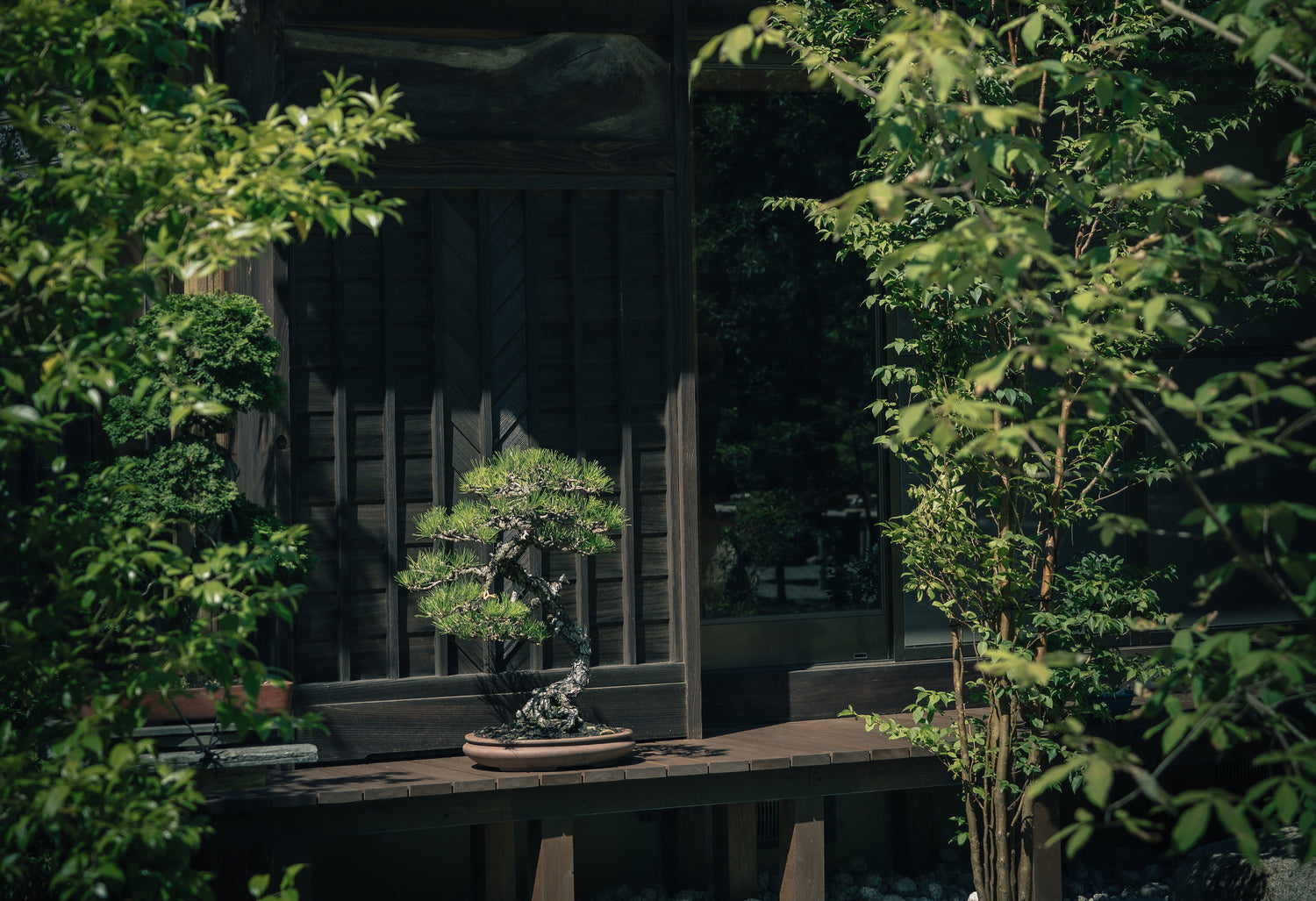The Kokufu exhibition, held annually in Tokyo, Japan, is widely regarded as one of the most prestigious bonsai events in the world. At the 97th Kokufu exhibition, which took place this February, over 300 carefully curated trees were displayed, showcasing the best of Japanese bonsai art.
In this article, we will highlight seven standout bonsai from the exhibition. From azalea and white pine specimens to more unconventional red pine, these bonsai are sure to inspire and captivate both seasoned enthusiasts and newcomers to the art form alike. Join us as we uncover the beauty of these seven exceptional trees from the 97th Kokufu exhibition.
Part 1- February 9 to 12, 2023
1. Red pine (赤松)

This red pine bonsai on display stands out as an unusual addition to the exhibition. Its delicate and airy appearance focuses on line, making it stand out among the other bonsai that tend to emphasize volume and form. The trunk and the branches of this red pine bonsai are complemented by the lines of the stand on which it is displayed. Together, they enhance the delicate and airy appearance of the tree, which focuses on line and creates a striking contrast between the fine trunk and highly ornate branches and leaves.
2. Ezo spruce (蝦夷松)

This "Ezo" spruce demonstrates mastery in its distinctive twin trunk shape. The deadwood in the center of the trunk adds a beautiful visual element that complements the overall design. It serves as a reminder of the tree's past and adds to its overall character and charm.
3. Imperial Pine tree (黒松石付)

One of the standout trees was the Imperial pine, which had a unique feature: a stone at the base of the trunk. In fact, the stone adds to the tree's power and makes it a more powerful version of an ideal Matsu, working to assist the tree's thin trunk. The branch pads were laid out in a typical more “moyogi” informal up-right pattern, making for a beautiful overall display. One thing to note is that there was very little wire used on the tree, a common practice in the Imperial collection, which tends to favor natural beauty over manmade refinement. This is in keeping with the Shinto religion, of which the Imperial family is the head, and which emphasizes a respect for nature. Overall, this imperial pine was an amazing display of natural beauty and the power of simplicity in bonsai.
Part 2 - February 15 to 18, 2023
4. White Pine (五葉松)

The branches and trunks all follow the same movement, with long branch pads accentuating the movement from left to right. The tree is visually anchored by a joined root to the left, which gives it stability and allows it to move drastically to the right. The variation in thicknesses throughout the different trunk lines creates noticeable differences and allows you to see the lines and movements of the branches. The foliage pads are purposefully kept thin through technique to allow the movement of the tree to be seen, rather than being visually obtrusive. The natural form of the white pine is maintained, with the tree being placed on a slab to reference it to its natural environment. This display tells a story about location and the grass used for the accent speaks to the bramble undergrowth of the mountains where these white pines grow. Overall, this tree and display focuses on landscape rather than form.
5. Iwashide (いわしで)

This Ishiwade has a unique texture resembling a cork board. It has multiple trunks that come from a shared root base, and the canopy has the same volume as a single trunk tree. The trunks themselves provide an opportunity to discuss wind and volume. Unlike standard forests, the number of trunks doesn't necessarily need to follow a strict idea of an odd number, as seen in this tree with four trunks. There is uncertainty about whether the first branch is considered part of the three trunks or not.
6. Azalea Tree (皐月)

This azalea tree has a growing pattern that is not entirely natural, but not completely unnatural either. Its dominant areas and long lines can be found in other bonsai trees, and the movement in its trunks and branches gives it an authentic style, despite being less refined than some others. Although azaleas typically flower in the summer, we can enjoy their foliage in the winter. In fact, when we look at this azalea during the winter months, we can already see buds forming on the branches.
7. White Pine (五葉松石付)

This pine tree has a compact, low and horizontal trunk that matches the horizontal aspect of the stone it's planted on. The soil is placed on the stone in a way that creates a contrasting growing area, with highlights of the stone standing out compared to the low levels of the soil. The roots of the tree wrap around the rock. It's a white pine tree, known for its long life, but it's a soft pine tree growing on a strong stone, which creates a balance between the power of the stone and the tree. The tree conveys a feeling of stability and strength.
Each year, the exhibition showcases the finest examples of bonsai artistry, and we are already eagerly anticipating the 98th Kokufu exhibition in 2024. Join us for a tour at Tree House Bonsai on February 11th or February 14th during the next exhibition, details here.
We look forward to welcoming everyone to experience the wonder and inspiration of bonsai and Japan.
***
Information and credits:
Place: Tokyo Metropolitan Art Museum
Trees: they belong to private owners, all displayed at the 97th Kokufu exhibition
Text and photography: Tree House Bonsai


